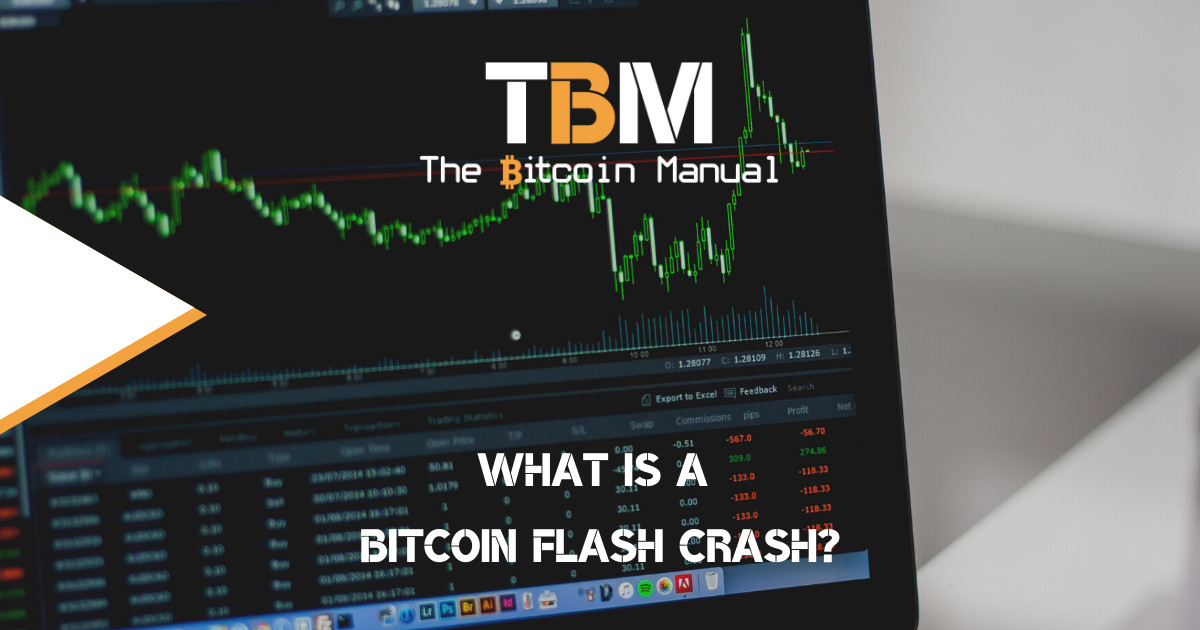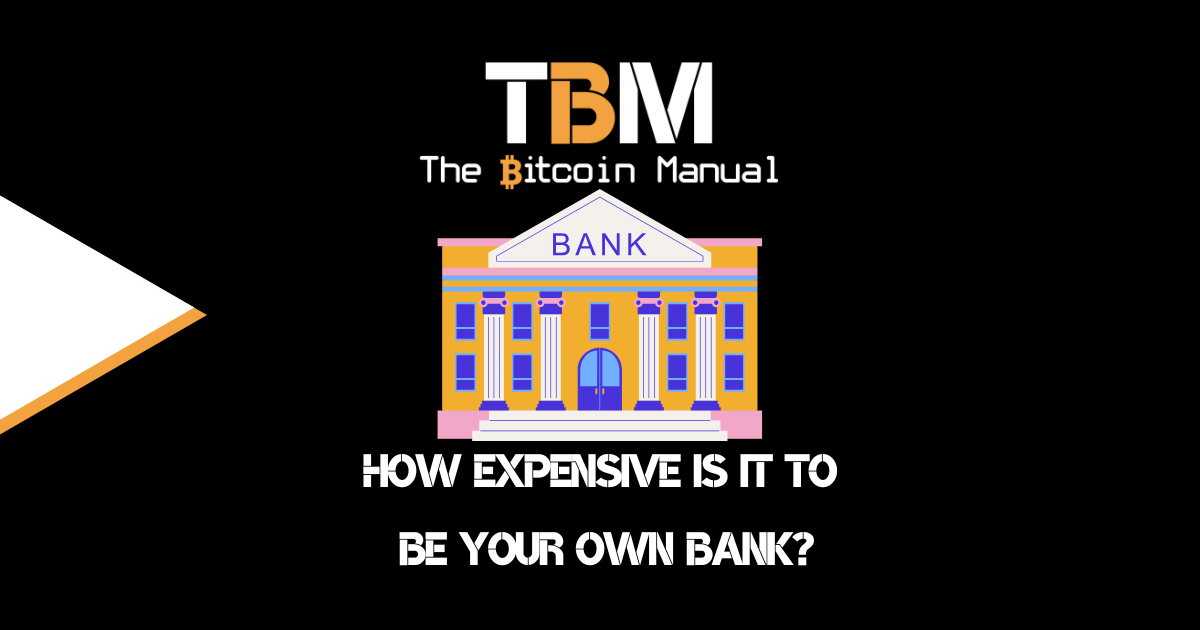When you make your first forays into bitcoin, you’re probably far more sensitive to price movements than those who have spent time in the market. Bitcoin is known for its volatility, and 5-20% daily moves are seen as normal, but that doesn’t mean additional volatility won’t take investors by surprise. It’s not uncommon for bitcoin to retrace, 30, 40, even 80% and if you don’t have conviction in the trade, you can get spooked out of your position.
There are different market corrections based on the length, depth and time it takes to recover. One type of correction that often catches new bitcoiners off guard is the flash crash.
What is a bitcoin flash crash?
A bitcoin flash crash is a situation where the price of bitcoin drops dramatically and then returns to its previous levels very quickly. A flash crash is not unique to bitcoin and can happen in other assets too.
Flash crashes are caused when a participant with a large amount of bitcoin sells and is price agnostic when selling. They unroll from their positions (dumping), and if there isn’t enough buying support at the time, it will push the price down, or it can be the result of market manipulation.
Once the price has fallen, buyers rush in for cheap bitcoin, which then raises the price back to the pre-crash levels.
Price can recover very quickly, sometimes in a matter of hours, which is what gives flash crashes their name.
Flash crashes can have wider market impacts, such as liquidations of leveraged long trades, which can earn exchanges a lot of money. Flash crashes can play into the favour of exchanges causing, which is why there have been accusations of market manipulation due to their incentive to do so by deliberately dumping bitcoin’s price.
How do flash crashes happen?
Flash crashes can occur for many a range of reasons. Given the structure of this nascent market. The early distribution curve and supply inelasticity of bitcoin create an environment in which types of flash crashes are most likely to occur. While the environment is ripe for flash crashes, there are certain players or influences that can result in a flash crash, namely:
International market exposure
Bitcoin trades 24/7 all year round in markets worldwide, and every market pair has a certain depth and liquidity. Suppose a Japanese bitcoin holder dumps on the BTC/JPY pair and pushes down the price. Arbitrage traders will rush in to pick up the spread, which could remove bids from other markets and bring down the cost of bitcoin across the broader market.
In addition to currency liquidity exposure, bitcoin is also exposed to regulatory influences. If an exchange in another country is shut down, if bitcoin is banned, if more burdensome regulations are placed on businesses or retail that force them to sell, that added supply will put pressure on the market as a whole.
Risk and portfolio rebalancing
Certain institutional investors have added bitcoin to their portfolio as a hedge or as a way to capture volatility. If the agreement with their LPs is that they need to retain a 10% exposure to bitcoin and bitcoin’s price moves up 50%, the fund is now overexposed in its bitcoin position and has to deleverage to get back to that 10% obligation.
As they roll out of their position, if not done over some time, the market can absorb, resulting in a flash crash.
Algorithmic trading
In markets with high volume and depth relative to market cap, a flash crash typically occurs due to runaway algorithmic trading strategies.
These algorithms move large quantities of assets very rapidly, without any human input. Often, trading algorithms will look at each others’ activity to determine their actions. If multiple algorithms use each other’s sales as a signal to sell, a positive feedback loop can ensue where several actors trigger each other to continue selling.
If there aren’t fail-safes or human intervention, these algorithmic sell-offs can drive deep price dives.
Lack of depth
In markets with less depth, a flash crash can occur due to the trading activity of a single actor. If that actor market sells a considerable quantity of bitcoin in a market with insufficient depth or demand to counteract the drop in price, then a flash crash will result. Trades like this typically lose a lot of value for the seller and are often executed by accident or to create a tax loss.
Leveraged trading
Flash crashes can be exacerbated by traders holding leveraged positions, especially in bullish phases. The more leverage traders put in, the higher the exposure should the price go against their prediction. If most traders are leveraged long, borrowing up bitcoin to speculate on the price, it can create an environment for massive deleveraging.
As the price drops, traders will have to sell their position to cover their losses. This puts additional downward price pressure on the asset and can trigger other traders to close their positions and bring locked supply back onto the market.
Handling flash crashes
Regulated markets like stocks have handbrakes like halting trading should crash become too severe, but bitcoin is a free market. In Bitcoin markets, there are no trading halts to stabilise the market, so investors must manage this risk through their trading strategies. The exact strategy depends on their risk tolerance and how they expect the market to react to the crash.
Due to the hard cap and consistent issuance of bitcoin, a flash crash is temporary, and the price rebounds as quickly as it drops. This is especially likely if the crash was due to a single actor placing a large sell.
Limit orders
To prepare for this scenario, an investor may use limit orders to buy more of the asset when the price declines, selling once it goes back up. In other scenarios, the flash crash may be followed by continued drops in price. This is likely if the crash was triggered by news that materially affects the value of the asset.
Stop losses
To reduce potential downside, as an active investor holding a position, you may implement a stop-loss or stop-limit strategy to automatically exit a position if the price drops below a specified threshold. However, the risk of this strategy is that an investor exits a position for a loss and then misses the upside of the price recovery.
Dollar-cost averaging (DCA)
If you want less complexity and stress, then a more straightforward approach to maintaining consistent exposure can be a better option. This strategy is known as dollar-cost averaging, where you would purchase a small amount of bitcoin each day regardless of the price.
Markets are typically challenging to predict, and trying to time them may lead to lower returns.
Having a simpler approach like the DCA is not only less stressful but fewer fees too. By minimising active trading, an investor eliminates the complications of trying to time the market. Additionally, minimising active trading avoids trading fees associated with constantly changing investment positions.
Crashes are part of the game
Crashes are unavoidable in the bitcoin market; you’re dealing with millions of people, all with their own goals; some will want to cash out at specific price points, and others will want to retain exposure as long as possible.
New participants will tend to follow markets and sell when it’s dumping and buy when it’s running up. Momentum chasing is a dangerous trade, and in most cases, all they do is pay DCA Hodlers a premium.
On the other hand, institutions and retail rollout of positions periodically, there will be opportunities to pick up relatively cheaper bitcoin if you’re in it for the long run.
In short, some will see crashes permanently reduce their wealth, while others will use it as an opportunity to average down their current positions for the future. It all depends on your risk tolerance and understanding of the bitcoin market, which comes with time.




